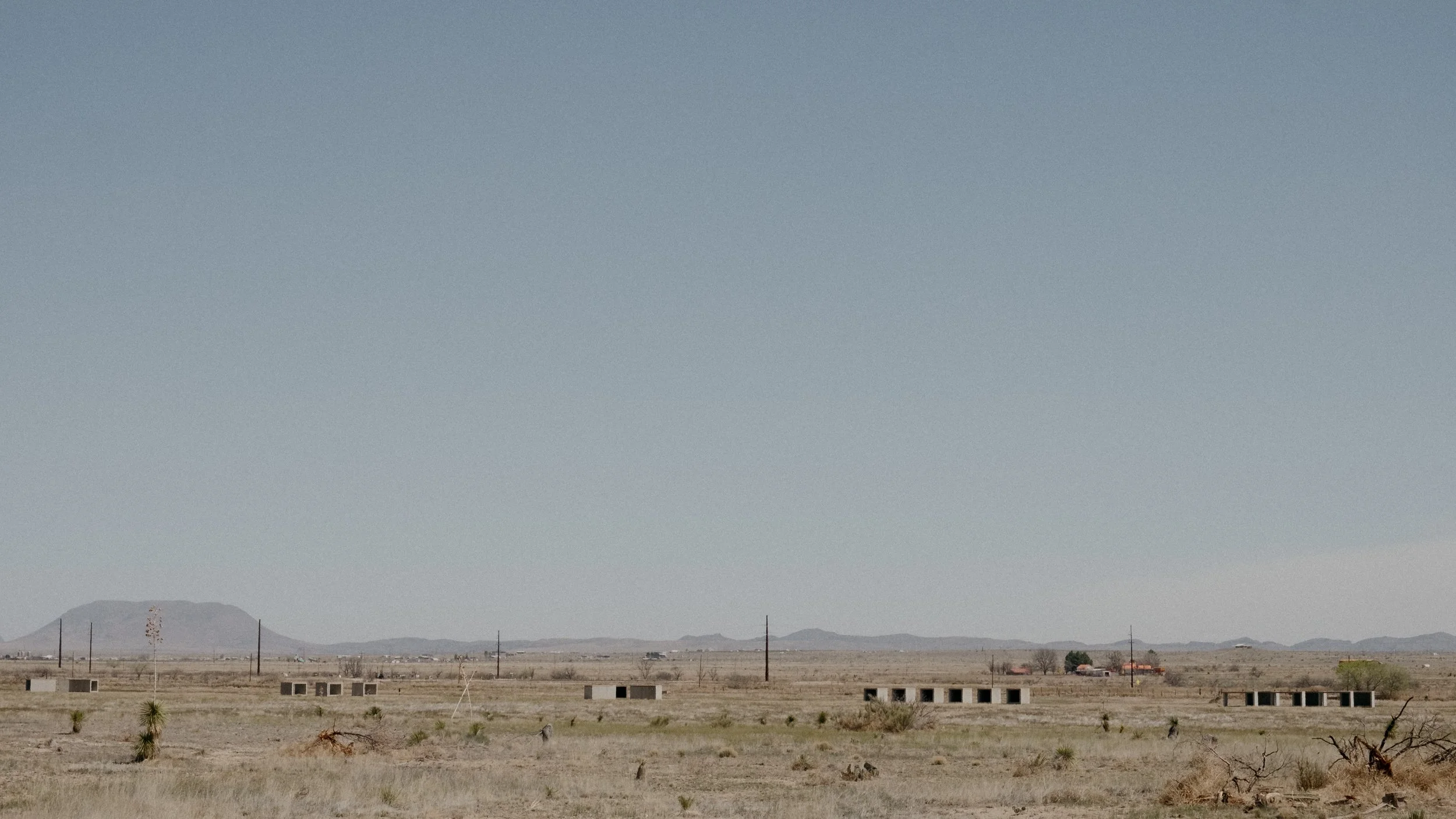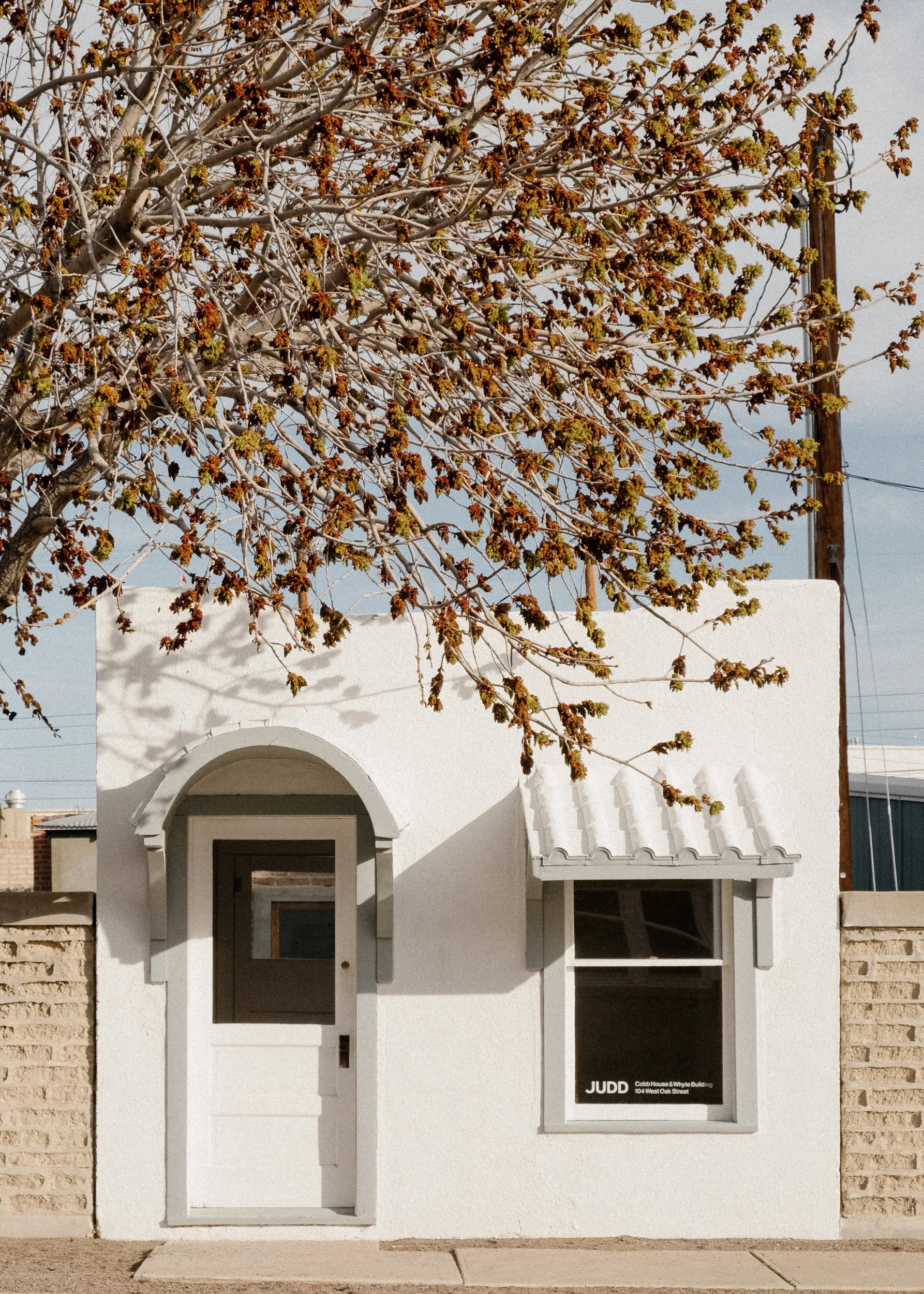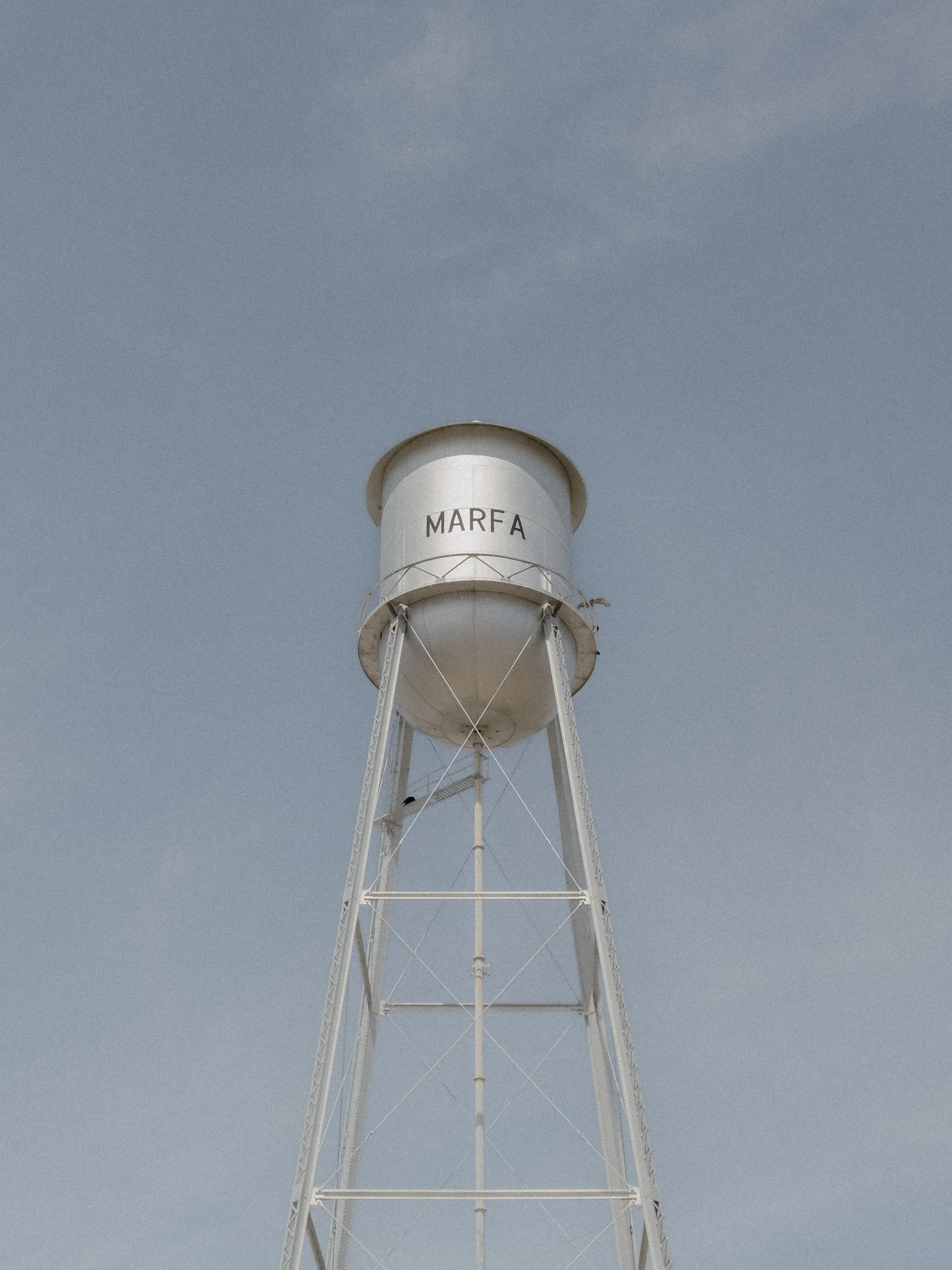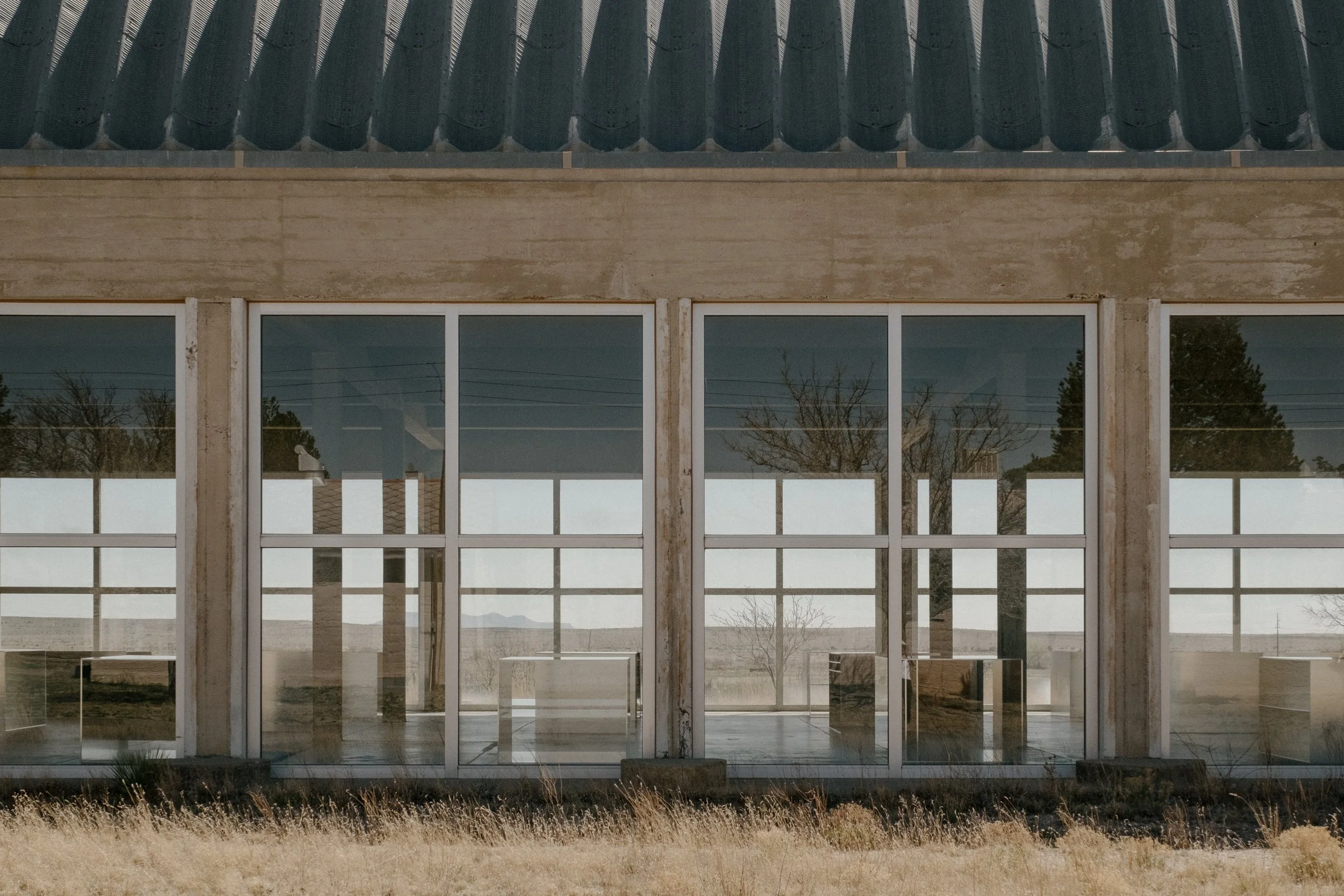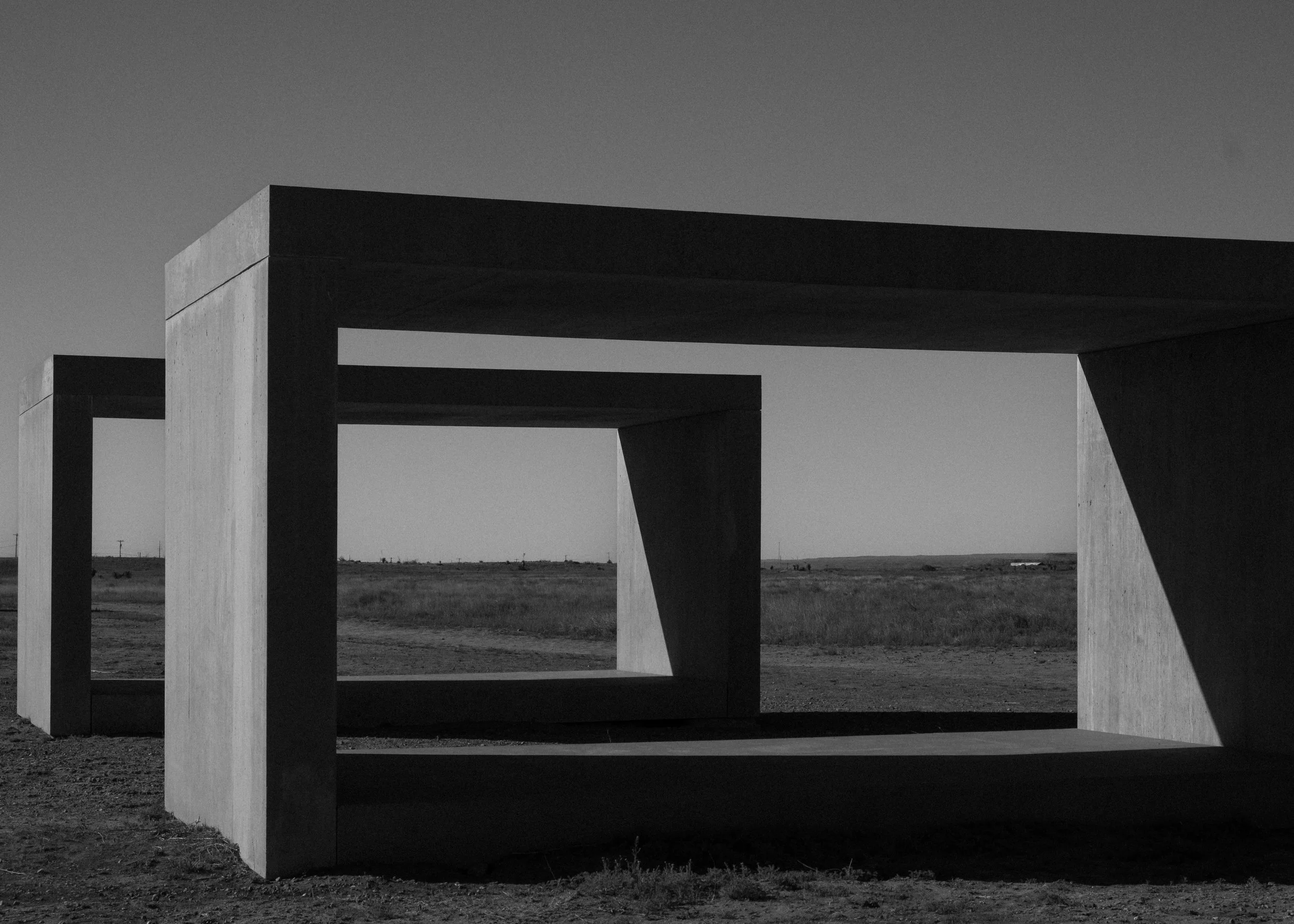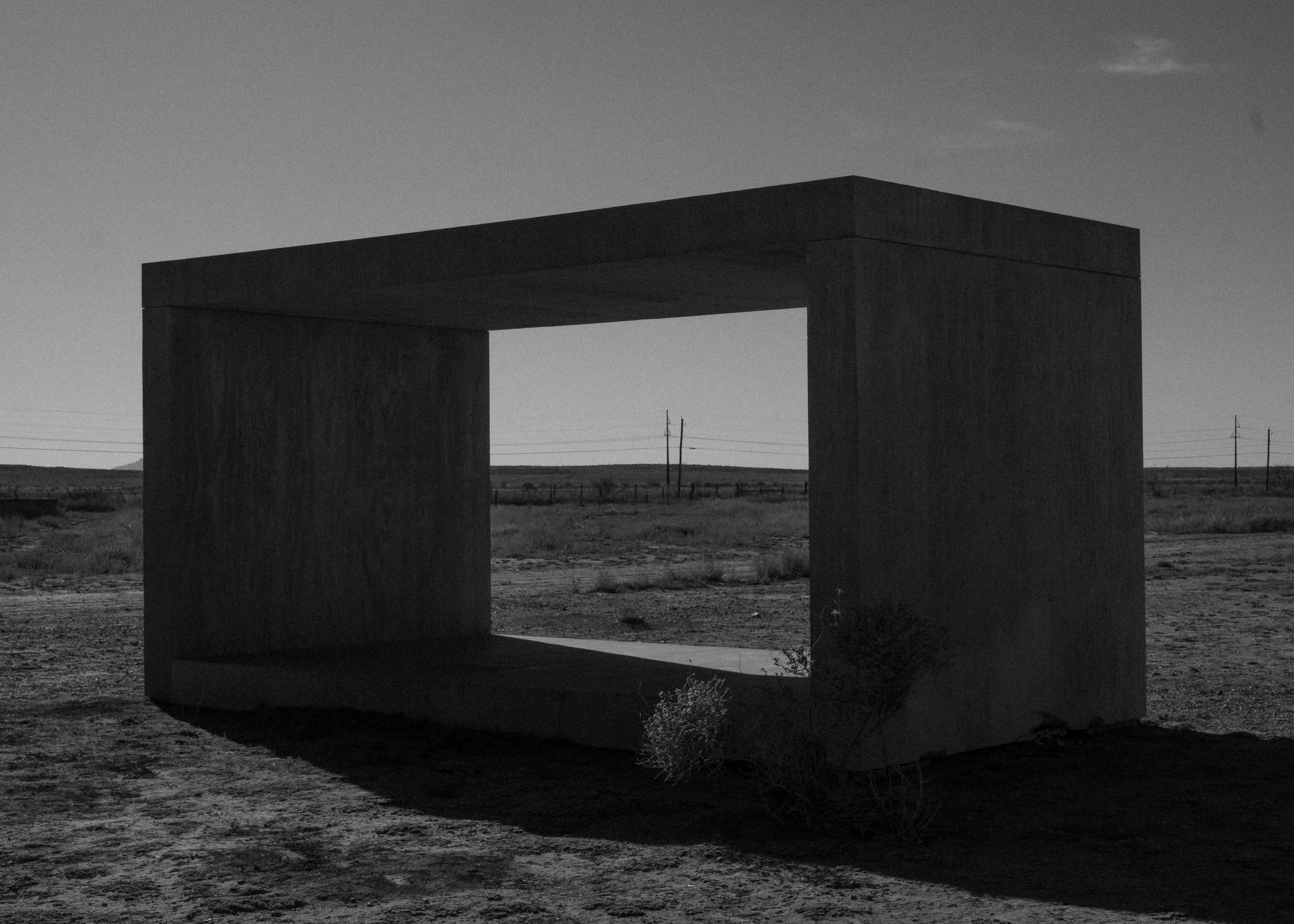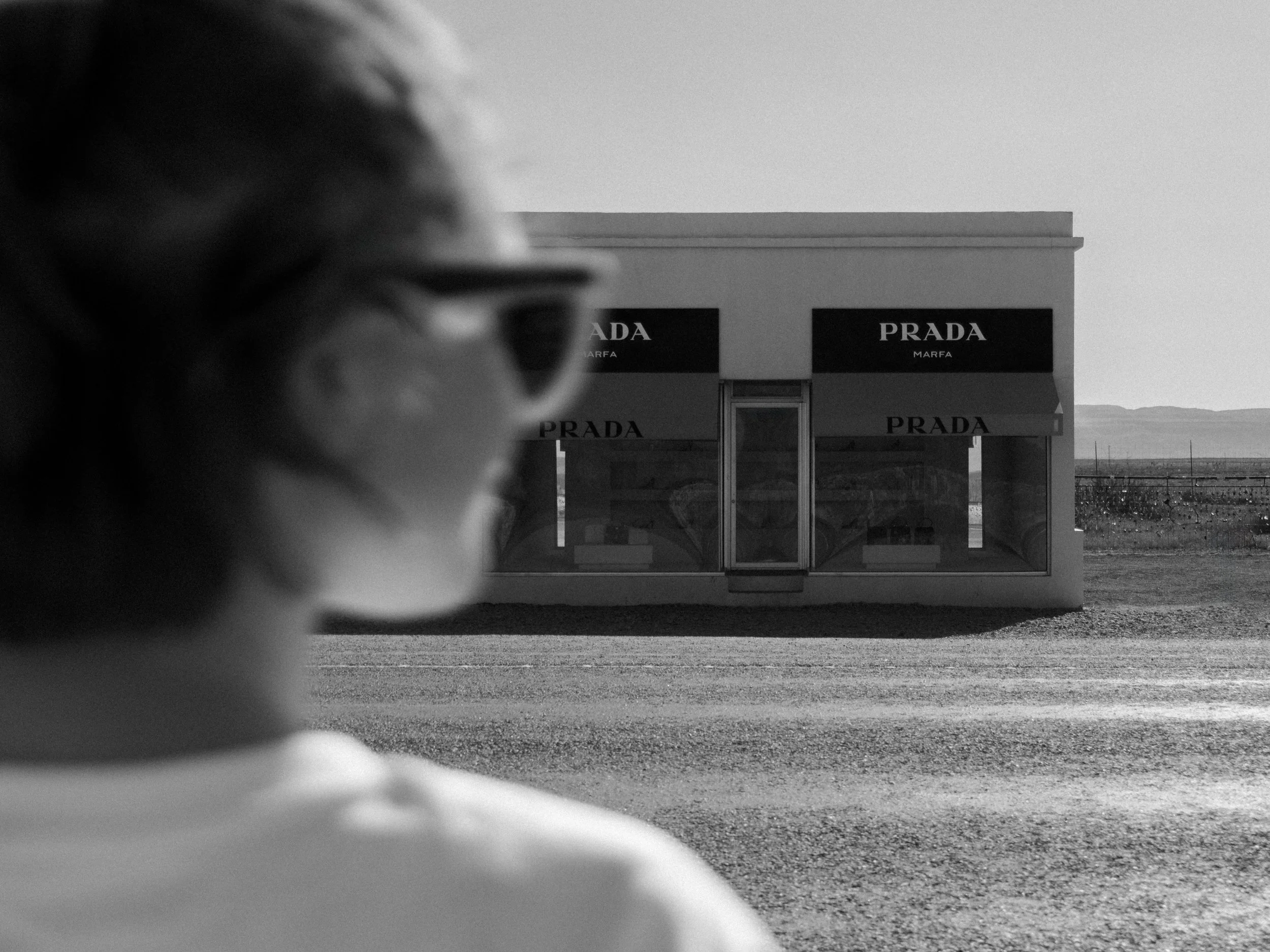Impressions | The Chinati Foundation
A road trip to Marfa Texas
There is no easy way of getting to Marfa Texas. Yet those who make the journey come for many reasons, all drawn by the allure of this unique desert town—a creative hub for artists, cowboys, and wanderers alike. Marfa’s mystique, however, might not exist as it does today if not for American artist Donald Judd, who left New York for the desert in 1977. Two years later he began developing what would become The Chinati Foundation, a museum dedicated to preserving and showcasing large-scale site specific works of art. Whether today’s visitors know it or not, it was Judd and Chinati that helped put this remote town back on the map.
Judd’s work has long been a source of reference and inspiration for me, and visiting the Chinati Foundation was a bucket list destination. So in 2024 photographer James Retief and I made the journey from London to Marfa Texas. In true Texan style, the only way to reach Marfa is by car, despite a railway running straight through town. The drive from the nearest city, El Paso, takes about three hours, but the directions are simple: head west on Interstate 10, turn south at Van Horn, and eventually signs of Marfa will emerge from the vast desert. A lonely weathered roadside bar, the iconic Prada Marfa art installation, and the towering billboards of James Dean and Elizabeth Taylor from ‘Giant’, the 1956 Hollywood classic filmed in Marfa.
A Museum with out walls
The Chinati Foundation sits on the edge of town, housed in what was once an abandoned U.S. military site. Judd believed art, architecture, and their surroundings were always in dialogue and wanted a place for a permanent collection of his work; along side that of a select few artists. What makes Chinati unique is that visitors experience the artwork as the artist intended, rather than through the lens of a gallery’s curation. This vision is perhaps most profoundly felt inside the former artillery sheds, where Judd’s 100 Works in Milled Aluminum are housed. Each aluminium box is made to the same external dimensions, yet with in that volume there are 100 different configurations. What is a simple concept becomes complex and multi faceted when seen together and in the space designed for them. Judd transformed the industrial buildings by installing floor-to-ceiling glass windows allowing the sun the pour in and views of the landscape out. Through out the day the shifting sun transforms each sculpture; some reflecting the light so the aluminium almost disappears, while others becoming deep dark voids blocked out all light.
Chinati’s Expanding Collection
Over the years, Donald Judd expanded The Chinati Foundation’s permanent collection to include works by artists such as Dan Flavin, John Chamberlain, Carl Andre, Roni Horn, Richard Long, and Robert Irwin, among others. Each piece is housed in a dedicated building or outdoor space on the grounds, and like Judd’s own work, many were created specifically for their environment. This is particularly evident in Dan Flavin’s installation, where he transformed six former army barracks to house 12 works of fluorescent light insulations, which plays with the viewers perception of colour.
15 Untitled Works in Concrete
The one instillation I was most eagar to see, and one of the few we were permitted to photograph, was of Donald Judd’s 15 Untitled Works in Concrete. It was our first stop when the gallery opened for the day, with the desert sun still low in the sky. From a distance, the geometric concrete forms dotted across the landscape, forming a graphic pattern in the landscape. As we wandered down the dusty path in the crisp morning air, their monumental scale became more imposing.
Each sculpture consists of 25-centimeter-thick concrete slabs forming a box measuring 5 meters long by 2.5 meters wide and high. Moving between and around them, you begin to grasp Judd’s consideration of placement, the way each unit interacts with the next and how the negative spaces become as integral as the structures themselves. The interplay of light and shadow created sharp angular contrasts on the surface that shifted as the sun (and the temperature) climbed higher.
Walking the full length of the installation (stretching nearly a kilometre) it became clear that this work is not meant to be seen from a single vantage point but experienced through movement. As we walked the relationship between the landscape, the structures, and our own perception of space reinforcing Judd’s belief that art, architecture, and environment are all in dialogue.
The Pull of Marfa
What makes The Chinati Foundation so remarkable is its dedication to preserving Judd’s vision long after his death and inviting the public to come and experience it firsthand. By the end of our trip, I found myself wanting to experience it all again, but this time to spend more time with the instillation that resonated with me most. Marfa, Texas, is a long way from London. I knew it was a once in a life time trip. But The Chinati Foundation has a magnetic force, pulling people in, shaping this small desert town, and without a doubt pulling me back in again someday.
You can learn more about The Chinati Foundation and the Judd Foundation

